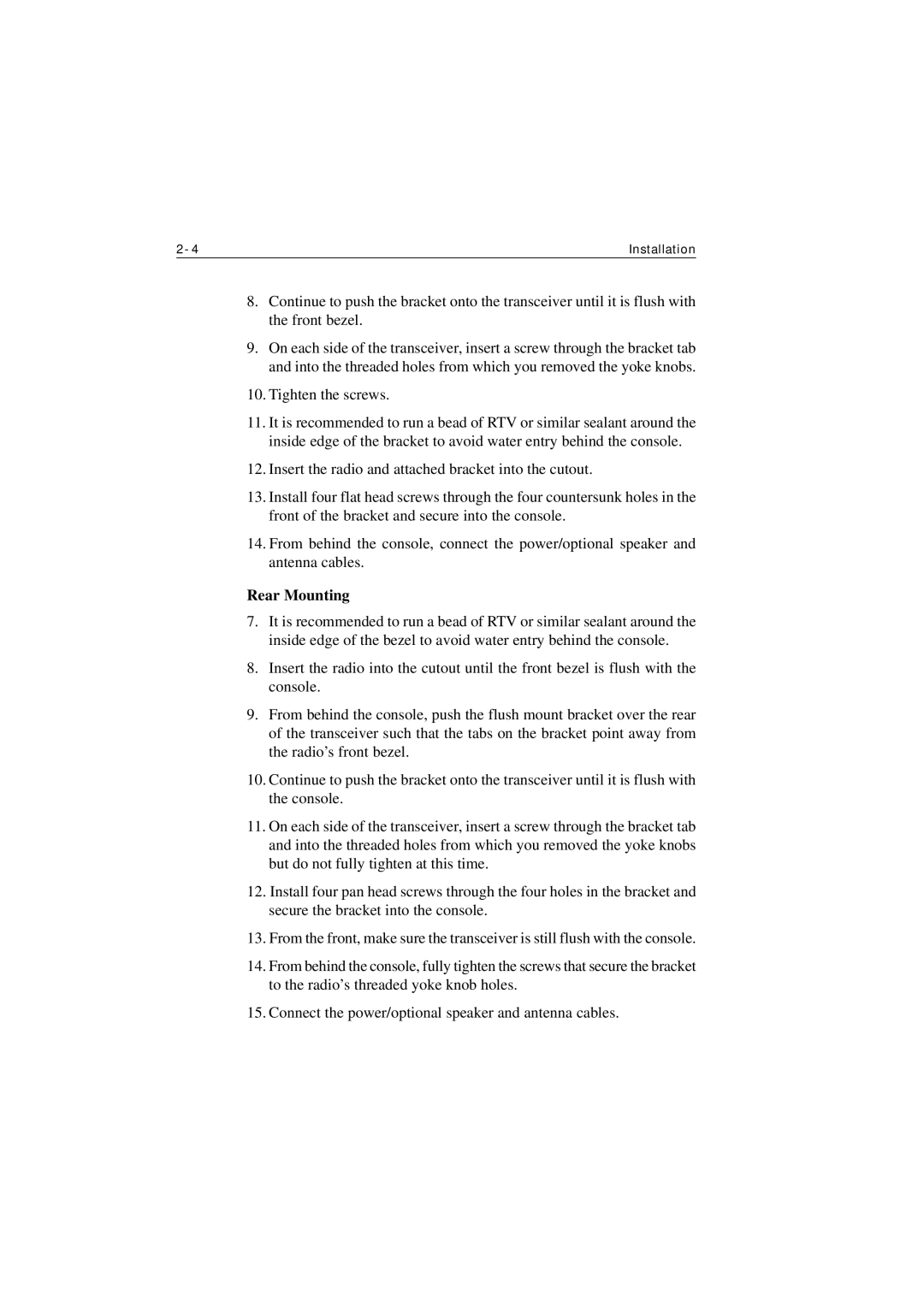Installation |
8.Continue to push the bracket onto the transceiver until it is flush with the front bezel.
9.On each side of the transceiver, insert a screw through the bracket tab and into the threaded holes from which you removed the yoke knobs.
10.Tighten the screws.
11.It is recommended to run a bead of RTV or similar sealant around the inside edge of the bracket to avoid water entry behind the console.
12.Insert the radio and attached bracket into the cutout.
13.Install four flat head screws through the four countersunk holes in the front of the bracket and secure into the console.
14.From behind the console, connect the power/optional speaker and antenna cables.
Rear Mounting
7.It is recommended to run a bead of RTV or similar sealant around the inside edge of the bezel to avoid water entry behind the console.
8.Insert the radio into the cutout until the front bezel is flush with the console.
9.From behind the console, push the flush mount bracket over the rear of the transceiver such that the tabs on the bracket point away from the radio’s front bezel.
10.Continue to push the bracket onto the transceiver until it is flush with the console.
11.On each side of the transceiver, insert a screw through the bracket tab and into the threaded holes from which you removed the yoke knobs but do not fully tighten at this time.
12.Install four pan head screws through the four holes in the bracket and secure the bracket into the console.
13.From the front, make sure the transceiver is still flush with the console.
14.From behind the console, fully tighten the screws that secure the bracket to the radio’s threaded yoke knob holes.
15.Connect the power/optional speaker and antenna cables.
